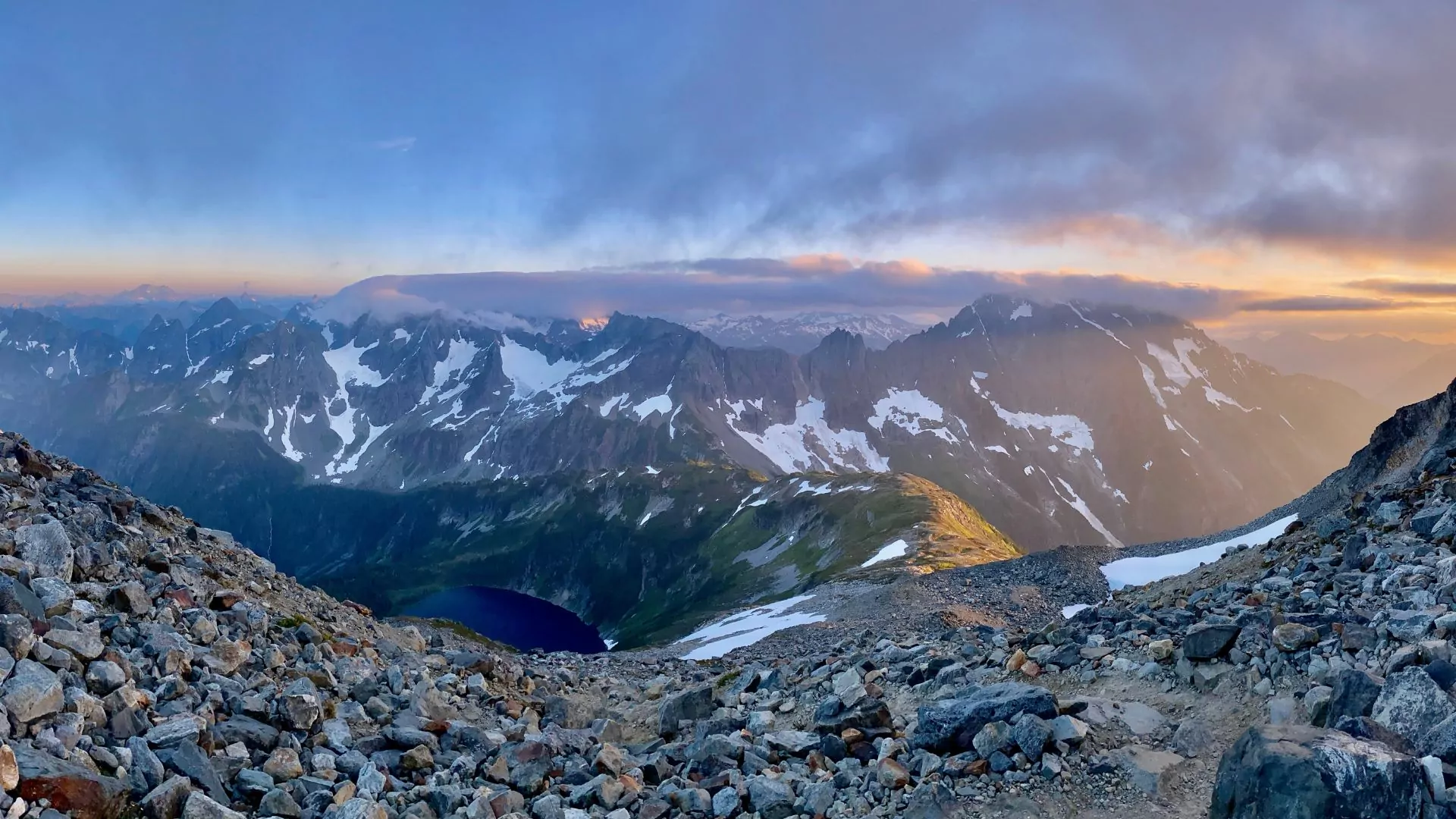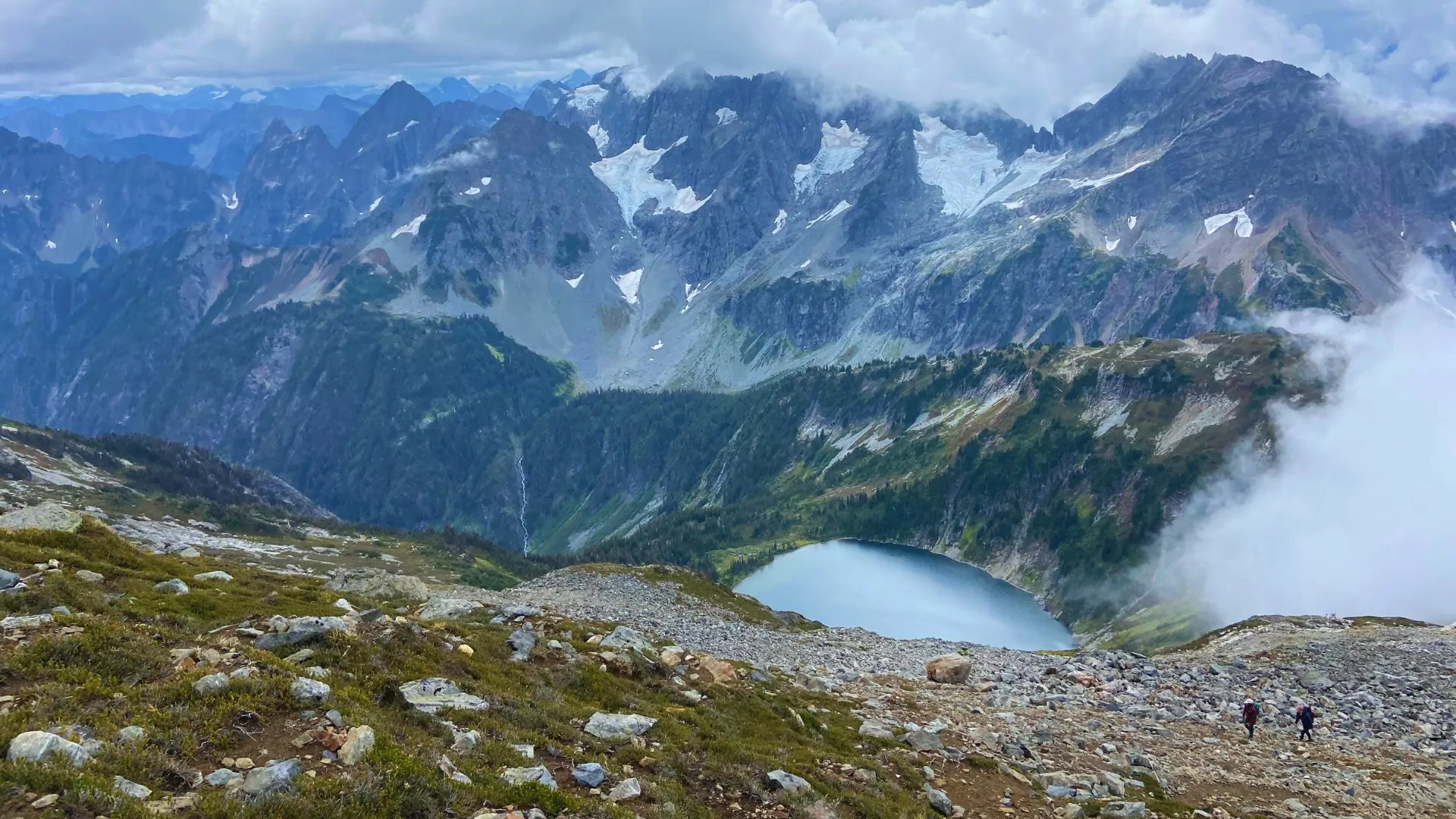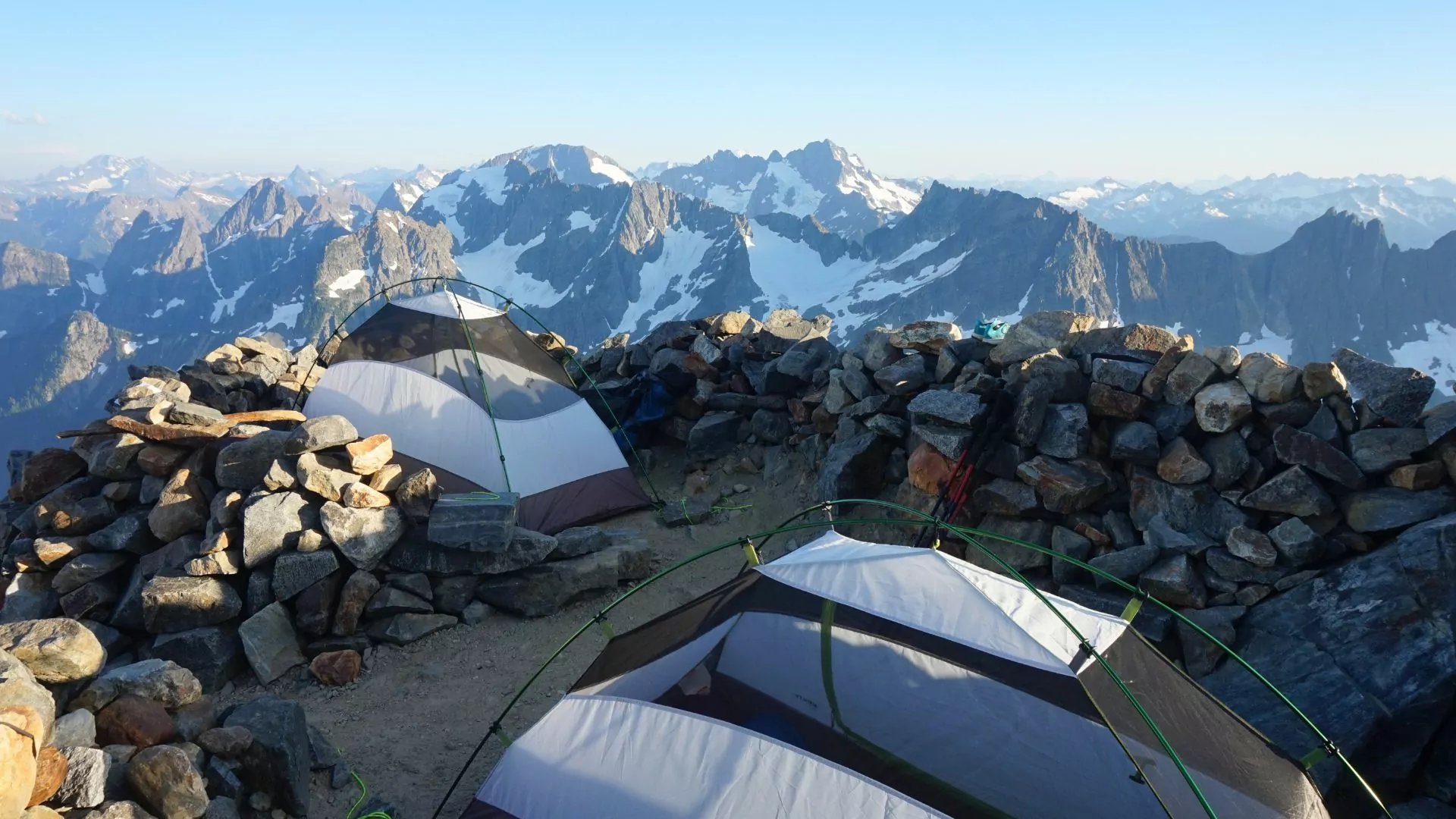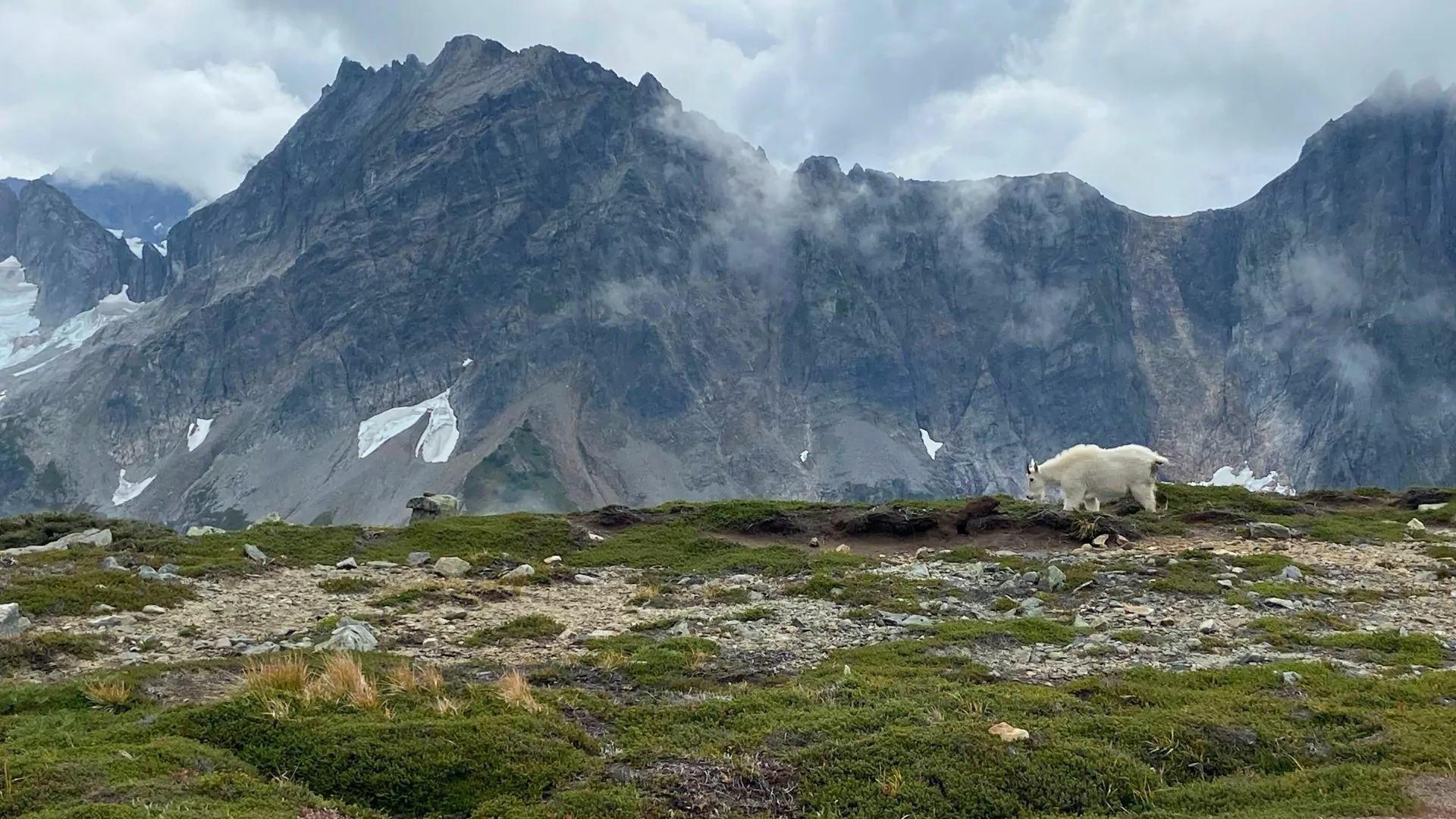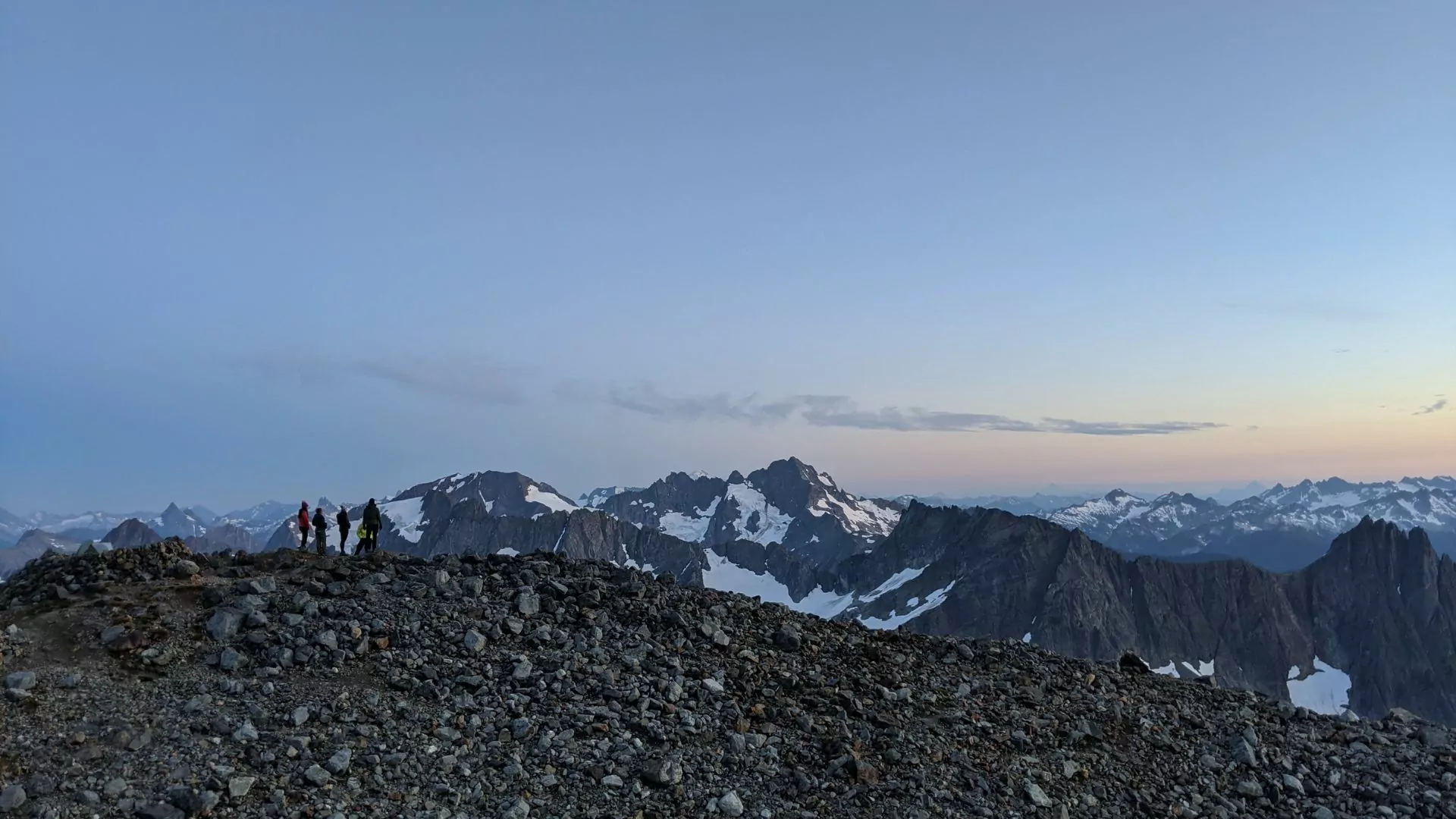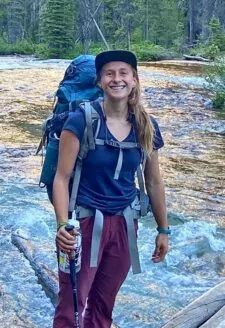A Guide to Sahale Glacier Camp
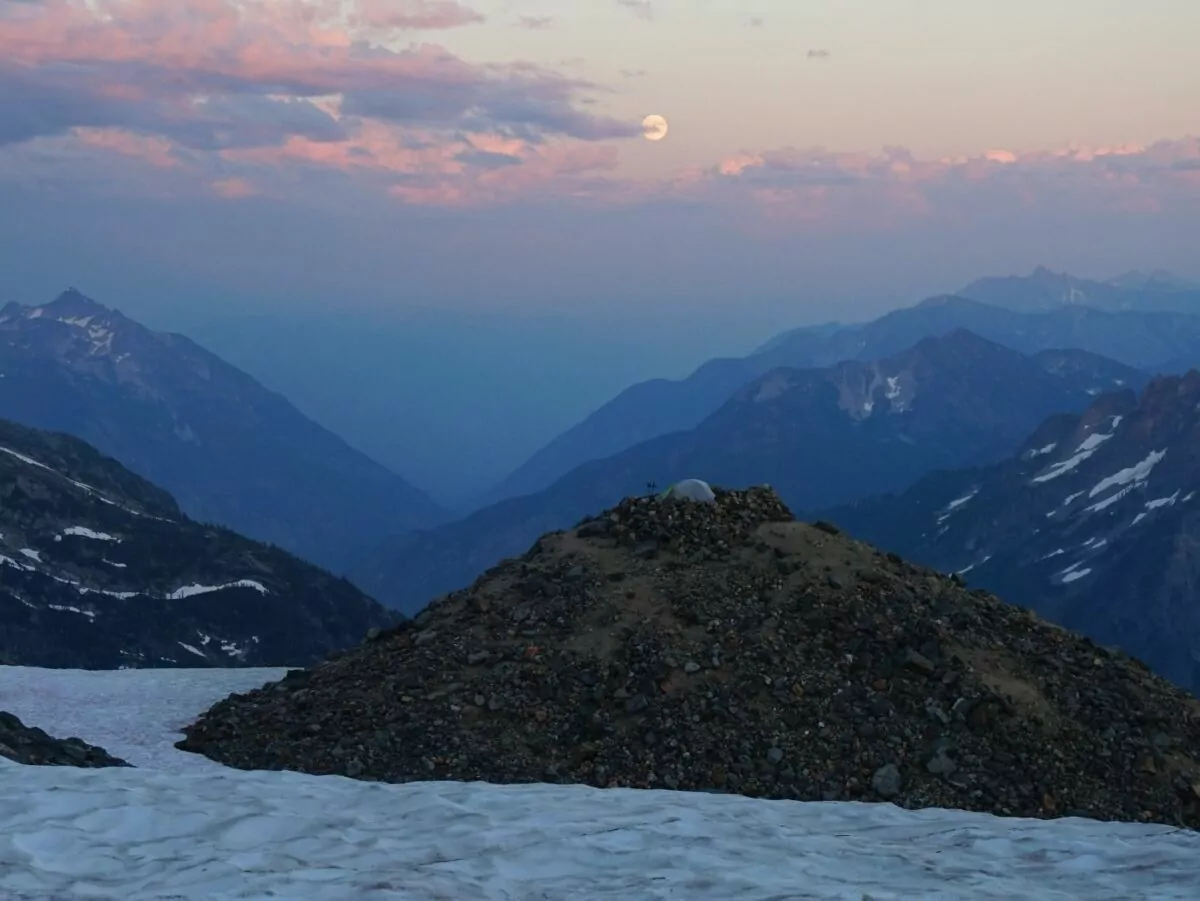
Looking for a challenging alpine trek within 4 hours of Seattle? Ready to navigate the permit system to spend the night beside a glacier? Want to experience a legendary backcountry toilet? Look no further – the Sahale Glacier Camp in North Cascades National Park is the adventure for you.
North Cascades National Park is one of the most remote National Parks, with most of the park designated as wilderness – meaning the natural landscape remains largely untouched by humans, offering a pristine and rugged backcountry experience. The park also boasts over 300 glaciers, the most of any park in the Lower 48.
When to Go
The hike to the Sahale Glacier camp is strenuous – 12 miles round trip with 3,940 feet of elevation gain. That’s akin to climbing the Eiffel Tower four times, but despite the challenge, the rewards are well worth every challenging step. Due to snow, the hike is only feasible for a few months each year. Cascade River Road, leading to the trailhead, typically opens in July and remains accessible until late September, but the exact dates depend on the conditions.
Getting a Permit
Securing a permit requires some planning. You can either apply online or try for a walk-up permit at the Wilderness Information Center (WIC) in Marblemount. If you prefer to plan ahead, you can apply for the Early-Access Lottery in early March, with results announced at the end of the month. In the past three years, 15-20% of applicants received lottery permits. Remaining permits are released at the end of April for those not successful in the lottery.
For last minute planners or those who didn’t luck out in the lottery, about 40% of available permits are set aside for walk-up applicants. These are first-come-first-serve, available the day before or day of your trek in person at the WIC. These are particularly coveted on weekends, so arriving early at the WIC and having a backup plan are wise strategies. More permitting information, as well as specific dates, can be found here.
If you scored a permit online, you’ll still need to pick up your permit at the WIC in Marblemount, so that is everybody’s first stop on the way to Sahale Glacier Camp. This visit is a great opportunity to check current trail conditions, road conditions, and weather forecasts with a ranger. Weather in the mountains can be unpredictable, especially at the Sahale Glacier Camp, which can experience rapid shifts in conditions, so be prepared for rain, snow, wind, or intense sun! Remember that sunlight reflects off the snow, increasing the risk of sunburn from unexpected angles, so be sure to apply sunscreen including under your chin and nose.
Let Wildland Trekking Take care of the Permit
Know Before You Go
You’ll also need to rent a bear canister from the WIC (or bring your own). With black bears and mountain goats in the area, and grizzlies being reintroduced, it’s crucial to secure all food, scented items, and trash. Ensuring these items are stored correctly overnight is essential for the safety of both humans and animals.
Packing for the hike means balancing weight with preparedness. The significant elevation gain will be more manageable with a lighter pack, but do not skimp on necessary clothing. Conditions at the camp can include strong winds and summer snowfalls. Essentials include insulated jackets, windbreakers, gloves, thermal underwear, and a warm sleeping bag. An extra pair of socks and camp shoes will make your life better if your feet get wet in the snow, and trekking poles are a must!
The Route
The starting point for this hike, Cascade Pass Trailhead, is reached via Cascade River Road. This drive includes steep switchbacks and washboarded sections, and may result in hiking a few extra miles if the road is closed before the trailhead early in the season, due to snow.
On the hike, you’ll start by tackling 35 switchbacks through a lovely pine forest. After 3.7 miles, you’ll reach Cascade Pass, which offers expensive views (weather permitting), benches, and a toilet. Many people turn around here, as it is an amazing destination for a day hike. Please be mindful of your crumbs and trash – there are chipmunks and squirrels here that like to graze on human food, but it’s quite unhealthy for them. Never feed wildlife, no matter how cute they are!
A note on Leave No Trace: to minimize impact on sensitive flora, visitors are encouraged to urinate on rocky areas rather than on vegetation, which attracts animals that can damage the plants. For solid waste disposal, the park has installed toilets at strategic points such as Cascade Pass. When these facilities are snow-covered, you must use a wag bag to carry out your waste.
Shortly after Cascade Pass, a marked turn for the Sahale Arm leads hikers uphill. This section is rich with wildlife, including marmots, pikas, and mountain goats who thrive in this subalpine environment. As you continue 0.8 miles, stunning views unfold of Sahale Mountain, Sahale Glacier, and Doubtful Lake, a striking blue alpine lake. Be mindful of staying on trail here, as there are areas in this meadow that the park is trying to revegetate.
As you continue on the clearly marked trail, you’ll reach a talus field that marks the last 0.5 miles of your hike and the terminal moraine of the Sahale Glacier. This steep field of loose rock requires careful hiking, as boulders can easily become dislodged underneath your feet. If you do send a rock down, be sure to give your companions a warning by shouting “ROCK!” (shout louder for bigger and/or faster moving rocks). In some sections it is easy to see where other hikers have gone, in other places it is not; when in doubt, head in the direction of the ridgeline with the black box toilet. This talus slope can also be snowy or icy, but due to the rocky terrain microspikes may not be helpful.
Upon reaching the Sahale Glacier Camp at 7,400 ft above sea level, panoramic mountain views await. The landscape is dotted with endless peaks and ranges, including Mount Rainier and Mount Baker visible in the distance. There are multiple tent spots outlined with rocks to attempt to protect them from the wind. If it’s snowy, you can stomp out a spot within the rocks for your tent.
Consider tying cord to your tent corners and around rocks, which can be more effective than staking. Be aware of wind as you set up camp – the gusts have a tendency to carry away beloved gear!
Water can be collected from a stream or a still pool of glacial melt. Make sure to treat all water before consumption. The toilet is located along the ridge and offers incredible views (but no privacy!). The next day, if the talus field is icy, a late departure can allow the sun to melt the ice and make for an easier and safer descent.
In a native Pacific Northwest language, Sahale means “falcon,” “sacred,” or “high place.” As you enjoy this sacred high place from a falcon’s view, remember to respect the sensitive environment and your fellow campers. The Sahale Glacier Camp offers an unforgettable adventure amidst some of the most breathtaking scenery in the Pacific Northwest. Embrace the challenge, treat the land with care, and your visit will be an enriching experience that lingers long after you’ve returned home.
